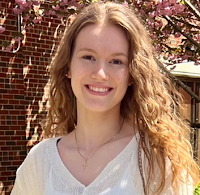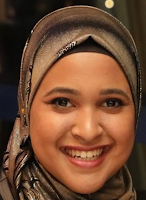Mohamed Beyruti, Verrazzano Class of 2022, completed majors in Accounting and Business Management, and minor in Business Finance
 During my
semester taking ACC 414, I experienced the comeback of the traditional world
from the virtual world and it was insane to see how many students wanted to
come back from isolation. I learned that different parts of my research (especially
the video) need to be prepared and thorough for all students to understand the
interview process for my research. Creating a step-by-step process made the
process smoother, and when writing the results of the paper I learned what went
right, what went wrong, and A LOT has changed.
During my
semester taking ACC 414, I experienced the comeback of the traditional world
from the virtual world and it was insane to see how many students wanted to
come back from isolation. I learned that different parts of my research (especially
the video) need to be prepared and thorough for all students to understand the
interview process for my research. Creating a step-by-step process made the
process smoother, and when writing the results of the paper I learned what went
right, what went wrong, and A LOT has changed.
Originally
the research for my capstone was going to completely different. I wanted to
work on how COVID-19 impacted people’s work-life balance, but then my professor
took it a step further, and the goal was to understand how people/students were
impacted by the virtual world with COVID-19.
Developing my
research paper helped me strengthen my writing skills, taught me different
methods of writing for a specific topic, and increased my research skills. The
research on this paper was insane; the number of articles about COVID-19, work-life
balance, working from home, there was just so much to talk about.
In the
beginning I was adding to much information and not drawing the reader into my
research, so that’s where my professor came in. Luckily, he slowed me down and helped
me with bits and pieces of research to add for my essay. This helped me understand
not to hone in on every single detail, and I learned that they were many
different methods about making my research paper both intriguing and convincing
to my audience. The main idea of my topic is something that is familiar,
considering that almost everyone stayed home during COVID.
I did not
want my paper to seem informative to the point where it would not keep the
audience’s attention (hence the graphs), and although I didn’t use a lot of
vocabulary, I attempted to keep my ideas relatable and easy to follow. When
writing my research paper, I used both similarities and differences from the
main topic, so my audience would understand the difference between the virtual
and traditional workplace. The tone of my essay is also very generalized, so
the audience reading it will be able to form their own opinion from my paper.
There were
many stages writing this paper, from the professor being a guide, the staff
keeping me on the right track, to making sure I followed the steps needed to
complete the paper, and I learned so much from each stage. I’ve got to say that
everyone pulled through till the end to help make this thesis my masterpiece.






























